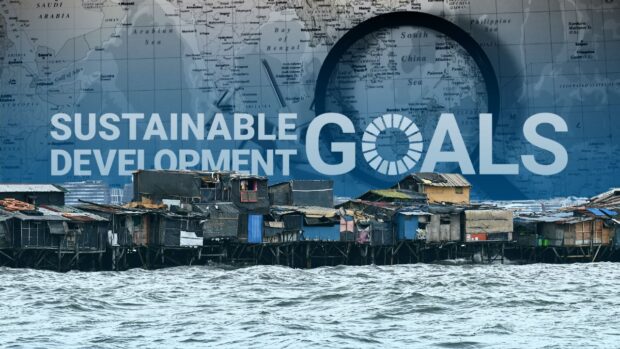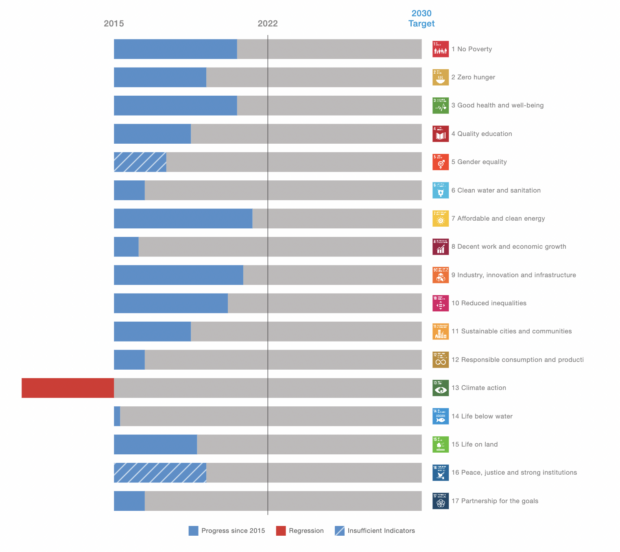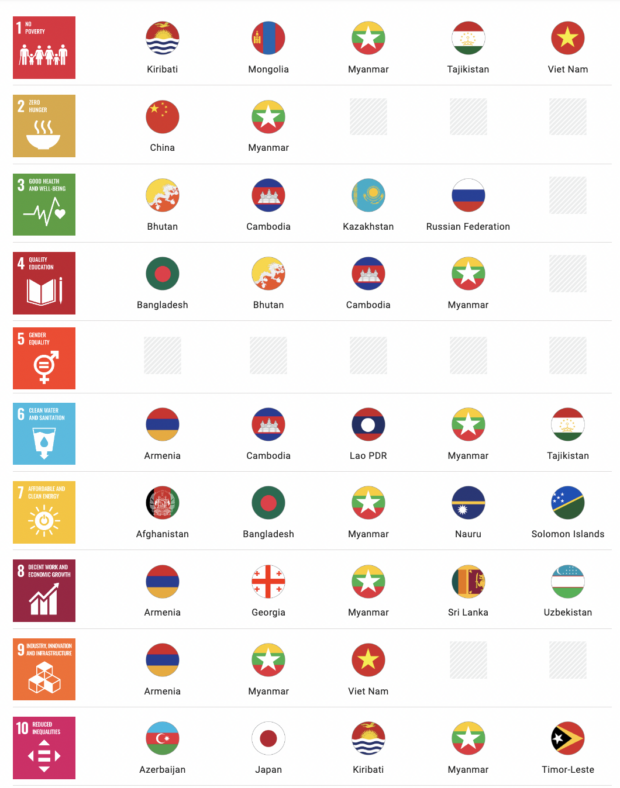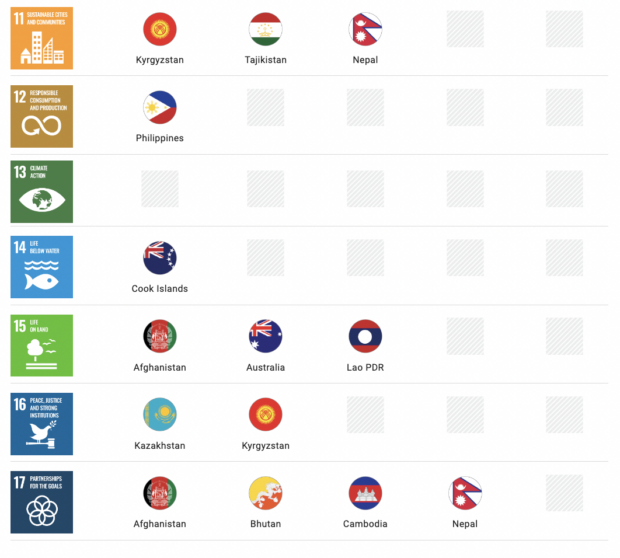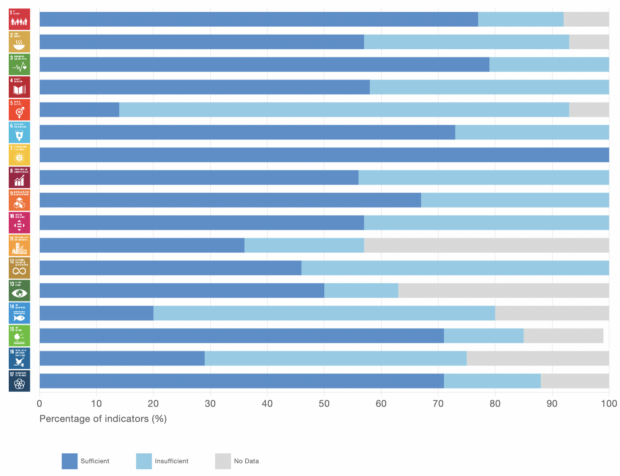UN development targets seen unreachable by 2030 in Asia Pacific
MANILA, Philippines—Unless efforts are intensified, the United Nations (UN) said the Asia-Pacific region will miss 90 percent of its Sustainable Development Goals (SDGs) by 2030.
This, as in the latest report released by the UN Economic and Social Commission for Asia and the Pacific (ESCAP), it was shown that the region only achieved 14.4 percent of progress needed.
Last Wednesday (March 22), the UN lauded countries in the Asia-Pacific region for demonstrating continuing commitment to sustainable development despite challenges like worsening climate change, health crises and geopolitical conflicts.
The report highlighted evidence-based national initiatives like reducing child marriages in India, increasing the rate of births attended by skilled personnel in Timor-Leste, improving the processing of identity documents for Afghan refugees in Pakistan, and a Clean Air Plan to tackle air pollution in Cambodia.
However, ESCAP executive secretary Armida Salsiah Alisjahbana said “while there are impressive accomplishments across the 17 Goals, none of the countries in the region are on track to reach them and overall achievement is much lower than anticipated for the midpoint.”
RELATED STORY: PH halfway through in achieving SDGs as 2030 deadline looms
“In developed and developing countries alike, persistent data gaps remain. Governments must renew their commitments to producing relevant, timely, granular, high-quality information to monitor and review the march towards the SDGs,” she said.
This, as the UN revealed that progress toward all 17 SDGs in the region has been slow, increasing from 4.4 percent in 2017 to 14.4 percent in 2022. “[There’s] a long way to go to achieve the SDGs,” it said.
As ESCAP said, at its current pace, the region will miss 90 percent of the 188 measurable SDG targets, stressing that the SDGs will remain “decades out of reach” in Asia and the Pacific.
Better world
But why is it important to make the SDGs a reality? As the UN stressed, achieving the SDGs will make certain that in the commitment to end poverty and hunger, fight climate change, and advance equality, education, peace and life, no one will get left behind.
Looking back, the SDGs are a universal call to action to end poverty, protect the Earth and improve the lives and future of everyone, everywhere. The 17 Goals were adopted by all UN Member States in 2015, as part of the 2030 Agenda for Sustainable Development which set out a 15-year plan to achieve the SDGs.
RELATED STORY: Zero-hunger generation in Asia-Pacific
The 17 SDGs demonstrate the scale and ambition of the new Agenda, with the UN stressing that “they seek to build on the Millennium Development Goals and complete what they did not achieve.”
“They seek to realize the human rights of all and to achieve gender equality and the empowerment of all women and girls. They are integrated and indivisible and balance the three dimensions of sustainable development: the economic, social and environmental.”
Should these SDGs be achieved, the UN expects “a world free of poverty, hunger, disease and want, where all life can thrive, a world free of fear and violence, a world with universal literacy, a world with equitable and universal access to quality education at all levels, to health care and social protection, where physical, mental and social well-being are assured.”
“[We envisage] a world where we reaffirm our commitments regarding the human right to safe drinking water and sanitation and where there is improved hygiene; and where food is sufficient, safe, affordable and nutritious. A world where human habitats are safe, resilient and sustainable and where there is universal access to affordable, reliable and sustainable energy.”
The realization of the SDGs is also expected to lead all people to a world of universal respect for human rights and human dignity, the rule of law, justice, equality and non-discrimination; of respect for race, ethnicity and cultural diversity; and of equal opportunity permitting the full realization of human potential and contributing to shared prosperity.
“We envisage a world in which every country enjoys sustained, inclusive and sustainable economic growth and decent work for all. A world in which consumption and production patterns and use of all natural resources – from air to land, from rivers, lakes and aquifers to oceans and seas – are sustainable,” the UN said.
PH one of pace leaders in the region
ESCAP said throughout the region, despite challenges, half of the countries in Asia and the Pacific were considered “pace leaders” in at least one goal, indicating that “achieving the SDGs is a collective endeavor that relies on the progress of every country.
Based on the list, the Philippines was the only country that made better progress than the regional average since 2015 in SDG 12, which is Responsible Consumption and Production.
Out of the over 40 countries in Asia and the Pacific, it was only Myanmar that beat the regional overage for eight SDGs—1 (No Poverty), 2 (Zero Hunger), 4 (Good Health) and Well-Being, 6 (Clean Water and Sanitation), 7 (Affordable and Clean Energy), 8 (Decent Work and Economic Growth), 9 (Industry, Innovation and Infrastructure), and 10 (Reduced Inequalities).
Cambodia also made a headway in SDGs 3, 4 (Quality Education), 6, and 17 (Partnerships for the Goals). Bhutan beat the regional average for SDGs 3, 4, and 17, while Tajikistan made progress in SDGs 1, 6, and 11.
No country in Asia and the Pacific beat the regional average for SDGs 5 (Gender Equality) and 13 (Climate Action). Meanwhile, it was only the Cook Islands that made better progress in SDG 14, or Life Below Water.
As ESCAP said, 70 percent of the regional pace leaders are countries in special situations, or the least developed and landlocked developing countries, and small island developing states.
Regression in climate action
It was stressed that progress towards SDG 13, or Climate Action, is “slipping away,” saying that “the region is both a victim of the impact of climate change and a perpetrator of climate change, with a responsibility to reduce greenhouse gas emissions.”
“The region is also regressing on SDG 13 owing to the increase in deaths and missing persons attributed to disasters,” ESCAP said.
RELATED STORY: Focus on SDGs that matter most
But in 2022, ESCAP said the SDGs that represented the areas of greatest progress for the Asia-Pacific region were SDGs 7 and 9, or Affordable and Clean Energy and Industry, Innovation and Infrastructure.
It said progress toward achieving SDG 7 was largely driven by achievements in access to electricity and international support for clean and renewable energy, while there was little progress in the share of renewable energy consumption.
Progress toward achieving SDG 9, meanwhile, was driven by the successes in mobile network coverage and total official flows for infrastructure development in the least developed countries.
A yearly flagship publication, the Asia and the Pacific SDG Progress Report used the latest data for global SDG indicators to determine where additional effort is needed in the region and where momentum for future progress is building.
Bridging data gaps
ESCAP said SDGs 5 (Gender Equality) and 16 (Peace, Justice and Strong Institutions) require the attention and demonstrated commitment from poor and rich countries to the SDGs to bridge the data gaps.
This, as when comparing between the overall region and the five countries with highest GDP per capita, both groups have poor data availability and poorest progress for SDGs 5 and 16.
“Data availability among Small Island Developing States (SIDS) is significantly lower than among Landlocked Developing Countries and Least Developed Countries, though it has gradually improved over time.”
The UN said bridging the SDG data gaps in Asia and the Pacific will take public and private investment, but finance is not the only factor in collecting SDG data.
“Through innovative approaches, existing administrative processes and survey exercises can be leveraged to produce data that bridge the gaps and enable SDG monitoring and evidence-based policy making in particular on Goals 5 and 16 where the largest data gaps exist.”
READ: What are presidential aspirants’ sustainable development goals?
TSB











